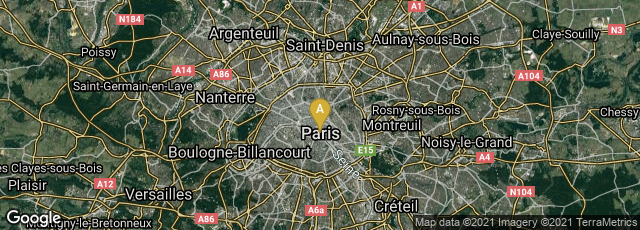

A: Paris, Île-de-France, France
Portrait of Monsieur Lavoisier and His Wife by - Metropolitan Museum of Art.
In 1789, the year of the French Revolution, French chemist and biologist Antoine Laurent Lavoisier published Traité élémentaire de chimie in 2 volumes with 13 engraved plates by his wife, the chemist Marie Marie-Anne Pierrette Paulze Lavoisier. Born into a wealthy Parisian family, Lavoisier was an administrator of the "Ferme Générale" and a powerful member of a number of other aristocratic councils. These political and economic activities enabled him to fund his scientific research. At the height of the French Revolution he was accused by Jean-Paul Marat of selling watered-down tobacco, and of other crimes, and was guillotined on May 8, 1794.
In his Traité work Lavoisier overthrew the phlogiston theory of Georg Ernst Stahl, established the concept of elements as substances which cannot be further decomposed, and reformed chemical nomenclature. An important consequence of his work was the law of conservation of mass, which states that matter remains constant throughout all chemical change. The book’s thirteen plates of chemical apparatus were drawn and engraved by Lavoisier’s wife, who had studied under the French artist David, painter of the famous portrait of the couple.
"In 1771, at the age of 28, Lavoisier married 13-year-old Marie-Anne Pierrette Paulze, the daughter of a co-owner of the Ferme générale. Over time, she proved to be a scientific colleague to her husband. She translated documents from English for him, including Richard Kirwan's Essay on Phlogiston and Joseph Priestley's research. She created many sketches and carved engravings of the laboratory instruments used by Lavoisier and his colleagues. She edited and published Lavoisier’s memoirs (whether any English translations of those memoirs have survived is unknown as of today) and hosted parties at which eminent scientists discussed ideas and problems related to chemistry" (Wikipedia article on Antoine Lavoisier, accessed 07-10-2011).
The work was first issued in a one-volume version known in only a handful of copies; the second issue in 2 volumes contains 95 pages of additional material, including the “Tables à l’usage des chimistes” (pp. 559-591), the “Table des matières” (pp. 592-619) and various approvals of the work (pp. 620-653).
Horblit, One Hundred Books Famous in Science, no. 64. Carter & Muir, Printing and the Mind of Man no. 238. Duveen & Klickstein, Antoine Laurent Lavoisier bibliography no. 154. Hook & Norman, The Haskell F. Norman Library of Science & Medicine no. 1295.